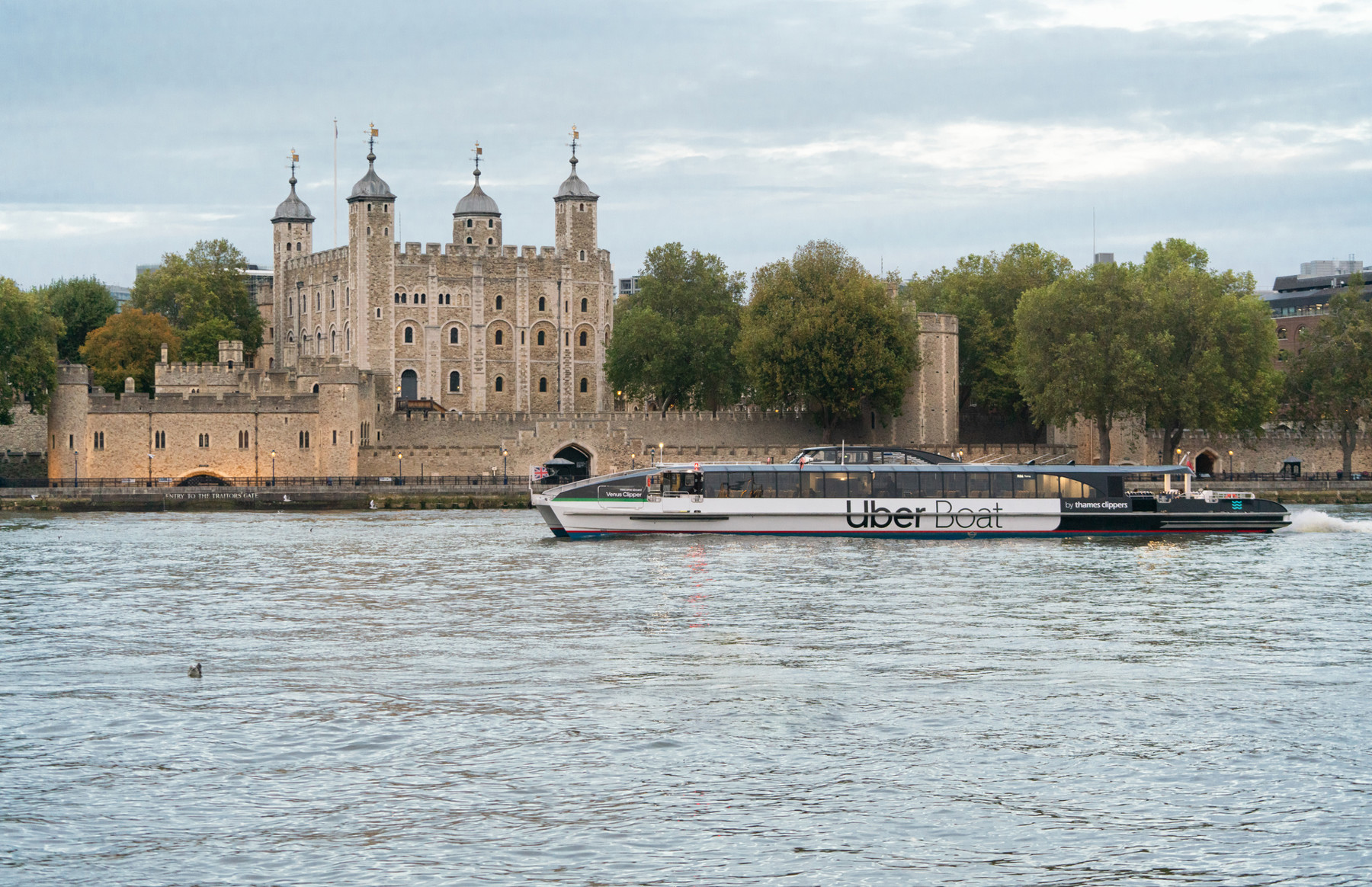
Tower of London: Dive into its History
Learn about the history of the Tower of London, what it was, and what it is today!

Learn about the history of the Tower of London, what it was, and what it is today!
Situated on the North bank of the River Thames, the Tower of London is one of the most famous historical sites in the world.
Many prisoners of the Tudors arrived by water via the Traitors’ Gate. Although that entrance is not in use anymore, you can still get there by boat.
Travel to the Tower of London with Uber Boat by Thames Clippers. Open 7 days a week and with services running until late at night, you’ve got plenty of time to soak in the 18 acres of sights.
Rich in history, the Tower of London has a lot of stories to tell. In this article, we dive into the facts and key features of this famous fortress and infamous prison.
Construction of the Tower started in the 1070s by William the Conqueror. Taking over 20 years to complete, it was originally built as a statement of Norman power and to protect his royal empire.
William the Conqueror built the White Tower, the central building and now home to the Royal Armoury Exhibition; it was later expanded by King Henry VIII and King Edward I to become the magnificent staple of the London skyline that you see today.

The Tower had many roles over the years, including:
Today, the Tower has become a tourist attraction for people to come and learn about its heritage. It’s home to the Crown Jewels, ravens and a community of Yeoman Warders and their families – it even has a pub!

Arguably one of the most recognisable features of the Tower of London, Yeoman Warders (also known as Beefeaters) were the monarch’s personal bodyguards. King Henry VIII stationed them at the Tower for protection.
The reason they gained the nickname ‘Beefeaters’ is that they were allowed to eat as much beef as they wanted from King Henry VIII’s table – a real honour!
Today, their duties involve guarding the guests at the Tower as well as ceremonial duties like the Ceremony of Keys (unlocking the Tower). Still rocking their traditional red uniforms, they make for a perfect picture opportunity.
Fun Fact – Beefeater Gin was named after the famous Yeoman Warders, and each guard gets sent a bottle of Beefeater Gin every year on their birthday.
Although Tower of London wasn’t built as a prison, hundreds of people who posed a serious threat to national security were incarcerated here. Very few people were actually executed inside the Tower of London, most public executions took place on nearby Tower Hill.
Executions on Tower Green were reserved for those of high rank; in total 10 people were beheaded here including three queens of England: Anne Boleyn (1536), Catherine Howard (1542) and Lady Jane Grey (1554).
Rumours are that they still haunt the Tower of London!
On 5 November 1605, Guy Fawkes and other catholic conspirators attempted to blow up parliament and assassinate King James I, along with his Queen and heir to the throne during the state opening.
Thanks to an anonymous tip-off by letter to the local authorities, Guy was caught red-handed by the Royal Guards below the House of Lords.
But what is the link to the Tower of London, I hear you ask? Well, Fawkes was imprisoned in the Tower and interrogated in an attempt to find out the other conspirators involved in the plot. During his time there, he was subject to brutal torture. One of which was called the rack, where opposite sides of his body were pulled away from each other until his joints separated – Yikes!
He endured several days of torture before he gave over the names of the other conspirators involved, who were later arrested and sentenced.
Everyone involved was charged with Treason and sentenced to be hung, drawn and quartered – after they were dragged through the streets of London behind a horse. Their body parts were then put on display throughout London, as a warning to everyone about the punishments of treason.

Known as guardians of the Tower, legend has it that if all ravens leave the Tower, the kingdom and tower itself will fall.
It’s thought that King Charles II was the first person to decree that the ravens should be protected after someone told him this theory. Ravens are kept at the Tower to this day and have their own dedicated Beefeater called the Ravenmaster to look after them.

2014 marked 100 years since the start of World War One (WW1), so artists Paul Cummins and Tom Piper were commissioned to create a memorial to mark the occasion.
Called Blood Swept Lands and Sea of Red, the moat was filled with a display of 888,246 hand-crafted ceramic poppies to represent every British Soldier that died during WW1.
The display was held from 28th July 2014 – 11 November 2018; marking the length of WW1 and viewed by over 5 million people during its time.
At the end of the exhibition, Tom Piper filled the moat with thousands of candles which were lit to mark the end of the war – this was called Beyond the Deepening Shadow.
Although the poppy memorial is no longer there, the moat is now home to The Superbloom. Over 20 million seeds were sown in the moat to create a thriving habitat for wildlife, visitors can walk through this new landscape and enjoy the sites of nature.
Find out more about Tower of London and book your tickets now at https://www.hrp.org.uk/tower-of-london/
Travel to the Tower of London in style by using the Uber Boat by Thames Clippers service, allowing you to take in the rest of the iconic sights of London on the way. Find us at Tower Pier.